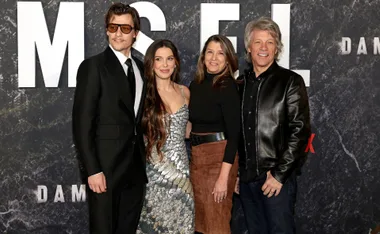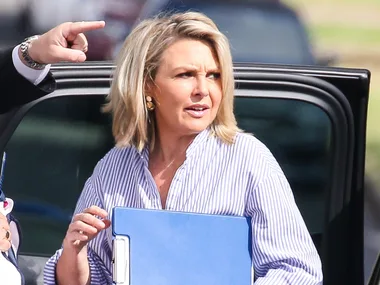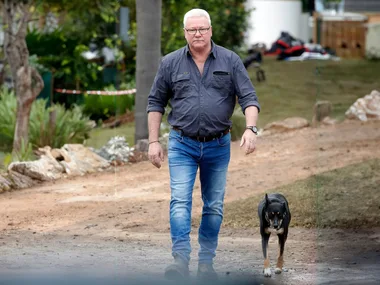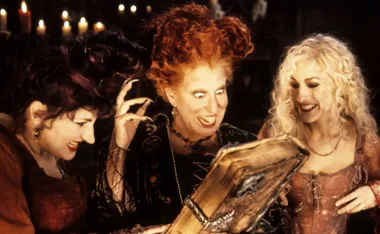Exposure to mercury puts our health at serious risk, so why are we still using it in dental fillings, asks Professor Kerryn Phelps.
The Mad Hatter: Have I gone Mad?
Alice: I’m afraid so. You’re entirely bonkers. But I’ll tell you a secret. All the best people are.
Lewis Carroll, Alice in Wonderland
The phrase “mad as a hatter” comes from the past use of mercury in curing felt for hat-making. Hatters exposed to mercury poisoning in their work developed neurological and psychiatric symptoms.
Mercury in any form is poisonous. These days, the occupation most likely to be exposed to mercury is dentistry. Not only are dental workers at risk, but also their clients, past and present. If you are one of the many people with silver-coloured amalgam fillings in your teeth, you could suffer the long-term effects of this potent toxin.
Most people are unaware that dental amalgam fillings contain 50 per cent elemental mercury. According to the United Nations Environment Programme, the use of mercury in tooth fillings represents some 10 per cent of global mercury consumption, thus dental practices are among the largest consumers of mercury in the world.
Mercury can produce many serious adverse health effects, including permanent damage to the central nervous system (especially in children during development), kidney disease, reproductive birth defects because mercury passes through the placental barrier, infertility and lung and cardiac problems.
There has been growing global concern about mercury for some time due to the escalating mercury levels being measured in air, water and fish.
An increasingly vocal consumer group says it is time to “end the mercury age of dentistry” and it now has the backing of a UN global treaty which calls on countries to phase out mercury amalgam.
This treaty, to be named after Minamata in Japan, the site of the world’s worst mercury poisoning incident, was finalised in Geneva this year. More than 140 nations, including Australia, developed the first legally binding agreement to curb mercury pollution. Dental amalgam was recognised as a serious environmental pollutant and was listed in the treaty.
One of the treaty’s recommendations involves encouraging professional societies and dental schools to educate and train dental professionals in the use of mercury-free filling materials.
Dr Lisa Matriste, director of Australians for Mercury Free Dentistry, says there is no justification for the continued use of mercury in dentistry.
“In Australia the continued use of this product is the result of long-standing attitudes amongst dentists,” she says.
“The use of dental amalgam is still taught in Australian dental schools because of tradition. It has been phased out in many countries in the world. For example, it has not been taught in Switzerland for 13 years.
“Mercury-free options have been available for decades and are both cost-effective and durable. Mercury-safe dental protocols are needed to protect our patients, the dental workers and the environment we all share. The Australian public no longer wants to have mercury implanted into their mouths.”
The Australian Dental Association, however, is less definitive than Dr Matriste in its policies towards mercury-free dentistry and suggests provisions for reducing the use of dental amalgam rather than a total ban.
“The ADA supports dentists having available the most appropriate filling materials to suit the clinical situation and so continues to support the availability and use of dental amalgam,” the association’s spokesperson told me.
“The National Health and Medical Research Council has attested to the value and safety of dental amalgam, but has suggested that it would be prudent to reduce its use in special populations, including children, women in pregnancy and persons with existing kidney disease.”
In short, the ADA proposes a “‘phase down’ not ‘phase out’ approach,” which many may feel is unsatisfactory.
ARE AMALGAM FILLINGS SAFE?
Dr Matriste disagrees with the view of some authorities (including the ADA) that old amalgam fillings are “stable”. She says that is a myth.
“You may not be able to see or taste the vapours but mercury can be accurately measured in people’s breath.
“Warnings from the amalgam manufacturer about mercury say that it shouldn’t be stored above 25°C. Yet everyone knows the body temperature is around 37 degrees. Mercury is easily vaporised from the mouth into the body, especially when drinking warm beverages, eating hot food and smoking cigarettes.
“The mercury fillings also swell because of their metallic nature and you grind off small amounts of the filling which you swallow. So there is constant absorption of mercury into the body. In 1991, the World Health Organisation said that the greatest dietary source of mercury is not fish — it is dental amalgam.”
SHOULD YOU HAVE YOUR AMALGAM FILLINGS REPLACED?
One of the reasons this issue has been kept quiet is we don’t have the infrastructure to remove and replace all dental amalgam fillings safely.
If you plan to have your dental amalgam fillings replaced, you need to talk to your dentist to ensure they know about the right safety protocols which include:
Use of a non-latex dental dam.
Airway protection. Your nose must be covered. There must be pressurised air under the dam for you to breathe.
Suction is crucial: in front and behind the dam.
The room environment needs an efficient exhaust system.
Air conditioning has to have an external vent.
Dentist and dental staff need to wear protective masks.
At this stage, there are two important pieces of advice: do not have any new dental amalgam fillings, especially if you are planning a pregnancy, already pregnant or breastfeeding; and under no circumstances allow your children to have a dental amalgam filling.
ENVIRONMENT
There is a major concern about where discarded mercury amalgam ends up. A dangerous feature of mercury pollution is that micro-organisms in the environment transform the mercury into a more toxic version known as methylmercury.
Mercury amalgam drilled out of teeth and discarded into the dentist’s sink usually ends up in sewage plants and ultimately in the environment, including our waterways.
Mercury left in teeth during cremation ends up in the air. With burials, it can lead to pollution of the earth. Without a doubt, dental clinics are a major source of mercury pollution of waterways.
Installation of equipment attached to the dental clinics’ outlet pipes, known as an amalgam separator, is another recommendation of the Minamata Treaty.
This is designed to make the dental profession environmentally responsible by protecting the aquatic food chain. Most dentists in Victoria and the ACT have complied with this, but other states and territories have been slow to act.
WHAT YOU CAN DO NOW
If you are concerned that you may have been exposed to unsafe mercury levels, then seriously consider consulting with a medical doctor who has undertaken training in heavy metal detoxification.
They can arrange the appropriate tests like hair tissue mineral analysis, faecal, urine, blood and DNA scans to assess your mercury exposure and then supervise its detoxification.
SYMPTOMS OF MERCURY TOXICITY
The United States Environmental Protection Agency has issued a health-effect checklist on mercury exposure.
Impaired development of the brain and nervous system in foetuses, infants and children.
Impaired thinking, memory, attention, language and fine motor and visual spatial skills.
Impaired peripheral vision.
Disturbed sensations (feelings of pins and needles, usually in the hands, feet, and around the mouth).
Lack of coordination of movements.
Impairment of speech, hearing and walking.
Muscle weakness, wasting and twitching.
Tremors.
Emotional changes (eg, mood swings, irritability, nervousness and excessive shyness).
Insomnia.
Headaches.
Reduced cognitive function.
At higher exposures, there may be effects on the kidney, respiratory failure and death.
Dear Ms McCabe,
I refer to your article in the May 2013 edition of The Australian Women’s Weekly (AWW) titled “Why our dentists must go mercury free”.
It is disappointing that Professor Kerryn Phelps, a former President of the Australian Medical Association, has chosen to misrepresent published scientific information regarding dental amalgam and failed to consult authoritative international sources.
She sought assistance from the Australian Dental Association Inc. (ADA). Work was done in response and scientific information and an offer to confer provided but this was ignored. The information provided appears to have been ignored.
The ADA wishes to make the following points:
Contrary to the AWW article, the United Nations Environment Program’s ‘Minimata Treaty’ does not ‘call on countries to phase out’ dental amalgam, but rather to ‘phase down’ its use. The ADA supports a ‘phase down’ approach.
The AWW article states that ‘Mercury]free options … are both cost]effective and durable”. The average fee in Australia for a 3]surface amalgam restoration is $186; for a 3]surface tooth]coloured restoration (‘composite’), $219; for a gold crown, $1432 (ADA FeeSurvey, 2012). The report of the World Health Organisation’s (WHO) “Future use of materials for dental restoration” (2009) states: “In the vast majority of low] and middleincome countries, the use of dental amalgam remains the preferred material for dental fillings or build]up material as alternative materials are currently far too expensive for people and society.’ and ‘In general, dental amalgam outlasts resin composites with median ages of 10]15 years for amalgam, compared with <5 to="" 8="" years="" for="" composites".="">
It is correct that mercury can be measured in breath, but only in nanogram amounts. (A nanogram is one thousand millionth of a gram.)
It is misleading to compare the recommended storage conditions of mercury (correctly stated in the article to be not above 25°C), with amalgam at mouth temperature (37°C). The inference is that amalgam is pure mercury; it is not, in fact, amalgam in the mouth contains a negligible amount of ‘free’ mercury, the rest being present as compounds of silver, tin and copper.
Several international organisations have conducted extensive studies on a possible link between amalgam restorations and adverse health effects.
Examples of the conclusions are:
Life Sciences Research Office, USA (2004): “The current data are insufficient to support an association between mercury release from dental amalgam and the various complaints that have been attributed to this restoration.” (Executive Summary)
European Commission’s Scientific Committee on Emerging and Newly Identified Health Risks (2008): “It is concluded however, that there is no scientific evidence for (sic) risks of adverse systemic effects exist and the current use of dental amalgam does not pose a risk of systemic disease. The main exposure to mercury in individuals with amalgam restorations occurs during placement or removal of the fillings. The removal of amalgam restorations will transiently increase the exposure of individual patients to relatively high levels of mercury and there is no clinical justification for removing clinically satisfactory amalgam restorations, except in patients suspected of having allergic reactions to amalgam constituents.”
US Food and Drug Administration (2009): “FDA considers dental amalgam fillings safe for adults and children ages 6 and above. The amount of mercury measured in the bodies of people with dental amalgam fillings is well below levels associated with adverse health effects.”
Health Canada (2006): “… current evidence does not indicate that dental amalgam is causing illness in the general population.’ and ‘A total ban on amalgam is not considered justified. Neither is the removal of sound amalgam fillings in patients who have no indication of adverse health effects attributable to mercury exposure.”
These facts must be brought to the attention of your readers.
Yours sincerely
Dr Karin Alexander
President
Australian Dental Association Inc.
Dear Dr Alexander
I write in response to your letter to the editor of The Australian Women’s Weekly, Helen McCabe.
I will address your points in order.
I am disappointed by your allegation that “published scientific information was misrepresented” and that I had, according to you, “failed to consult authoritative international sources”. My research in preparation for this article revealed that this is a highly controversial issue within dentistry. What is clear is that there is sufficient concern within organisations such as the NHMRC to warn against the use of mercury amalgam for children, pregnant and breast feeding women and people with kidney disease. This would not indicate a “safe” material.
I did indeed seek assistance from the Australian Dental Association Inc. (ADA) and I thank you for providing that assistance in the form of written responses to my questions. This is a common method used in the media and ensures accurate quoting. The information provided by the ADA was not ignored. On the contrary, I used relevant quotes from those responses, which you will find within the text.
Regarding the “phase out” vs “phase down” terminology. You would be well aware that “phasing down” is a negotiated position leading towards phasing out of dental amalgam over time. One of the issues is that the recommended use of amalgam in poorer populations highlights a social inequity.
With a “phasing-down” or “phasing-out” approach any timetable would involve development of suitable cost-effective non-mercury materials so that poor people would not be unfairly disadvantaged by being unable to afford dental care.
I am sure that you will agree that “lack of proof of harm” is quite a different concept to “proof of safety”. It is not possible to rule out a subclinical toxic effect.
Thank you for your acknowledgment that mercury can be measured in breath. You would be aware also that there is controversy about the amount of systemic mercury uptake, varying widely between individuals.Regarding the position of international organisations, Norway, Sweden and Denmark have all banned the use of dental amalgam.In Australia, the NHMRC document acknowledges the considerable uncertainty around the health effects of mercury and that there is sufficient concern to recommend its use be avoided in children and pregnant women. It makes the point that wherever possible alternatives to amalgam should be used.You quote the World Health Organization. Its monograph on mercury and human health says:Studies on humans and animals have demonstrated that dental amalgam contributes significantly to mercury body burden in humans with amalgam fillings.
Dental amalgam constitutes a potentially significant source of exposure to elemental mercury is the most common form of exposure to elemental mercury with estimates of daily intake from amalgam restorations ranging from 1 to 27 µ/day.
Absorption also varies according to individual factors such as gum chewing and bruxism (tooth grinding).
The number of restorations — amalgam or otherwise — is declining, largely due to improved dental hygiene, in all industrialised countries examined declining by 38 per cent since the 1970s in the USA and over 65 per cent in the 10 years from 1986 in the UK.
Although several studies have demonstrated that some mercury from amalgam fillings is absorbed, no relationship was observed between the mercury release from amalgam fillings and the mercury concentration in basal brain. However, in the same report it was concluded that ” … even at very low mercury levels, subtle changes in visual system function can be measured.”
In multiple sclerosis patients with amalgam fillings, red blood cells, haemoglobin, hematocrit, thyroxine, T lymphocytes and T8 (CD8) suppressor cells levels are significantly lower, while blood urea nitrogen and hair mercury levels are significantly higher.
The report also notes that regarding elemental mercury exposure, the main form of exposure from dental amalgam,” most studies rely on assessment of exposure at the time of study, which may not be fully informative, as mercury has a long half-life in the body and thus accumulates in continuous exposure,” making the evaluation of effects on health uncertain.
Regarding the position of international organisations, Norway, Sweden and Denmark have all banned the use of dental amalgam.
In Australia, the NHMRC document acknowledges the considerable uncertainty around the health effects of mercury and that there is sufficient concern to recommend its use be avoided in children and pregnant women. It makes the point that wherever possible alternatives to amalgam should be used.
You quote the World Health Organization. Its monograph on mercury and human health says:
Studies on humans and animals have demonstrated that dental amalgam contributes significantly to mercury body burden in humans with amalgam fillings.
Dental amalgam constitutes a potentially significant source of exposure to elemental mercury is the most common form of exposure to elemental mercury with estimates of daily intake from amalgam restorations ranging from 1 to 27 µ/day.
Absorption also varies according to individual factors such as gum chewing and bruxism (tooth grinding).
The number of restorations — amalgam or otherwise — is declining, largely due to improved dental hygiene, in all industrialised countries examined declining by 38 per cent since the 1970s in the USA and over 65 per cent in the 10 years from 1986 in the UK.
Although several studies have demonstrated that some mercury from amalgam fillings is absorbed, no relationship was observed between the mercury release from amalgam fillings and the mercury concentration in basal brain. However, in the same report it was concluded that ” … even at very low mercury levels, subtle changes in visual system function can be measured.”
In multiple sclerosis patients with amalgam fillings, red blood cells, haemoglobin, hematocrit, thyroxine, T lymphocytes and T8 (CD8) suppressor cells levels are significantly lower, while blood urea nitrogen and hair mercury levels are significantly higher.
The report also notes that regarding elemental mercury exposure, the main form of exposure from dental amalgam,” most studies rely on assessment of exposure at the time of study, which may not be fully informative, as mercury has a long half-life in the body and thus accumulates in continuous exposure,” making the evaluation of effects on health uncertain.
I must admit I think it is bold for the ADA or any other organization to have any confidence in claiming that mercury amalgam is “safe” for human health, when there is so much controversy about it.
Consumers have a right to know about this controversy so that they can make informed decisions about whether they allow mercury to be implanted in their teeth, given the uncertainty about its safety.
Yours sincerely
Prof Kerryn Phelps AM
Newsletter conversion description. Get the latest in your inbox.


















































.jpg?resize=380%2C285)









